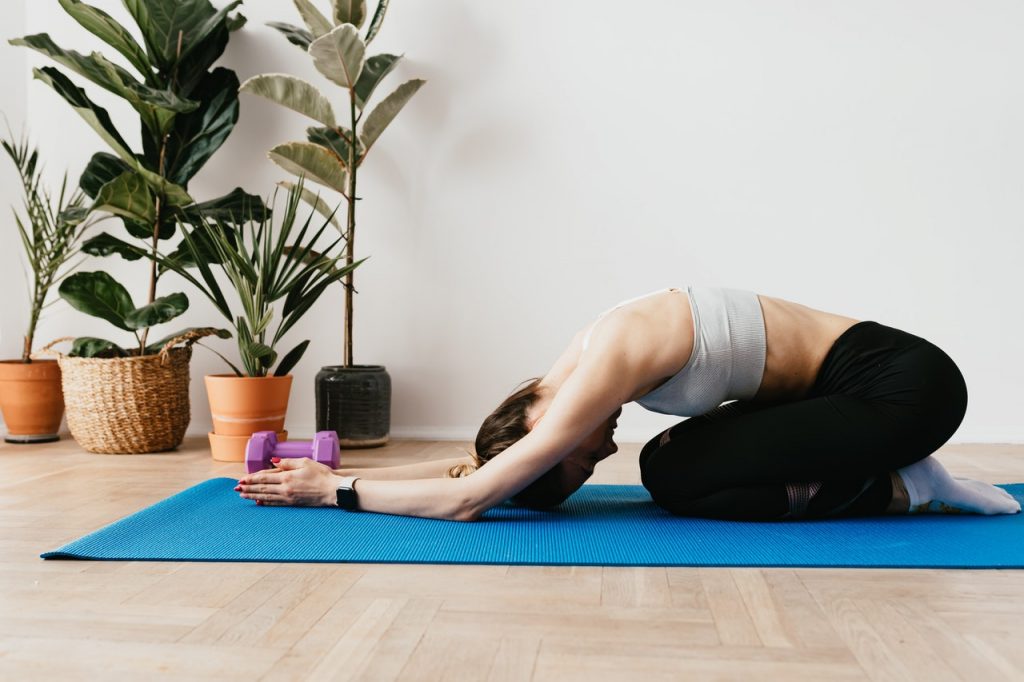Relaxation exercises don’t require a lot of effort or time, and they are an ideal way to recover quickly. If you develop the habit of daily exercise, you will see how quickly insomnia, irritability and rapid fatigue will pass.
In the 1920s, American physician Edmund Jacobson developed a technique of progressive muscle relaxation based on physiological mechanisms. At the core of Jacobson’s training is the fact that a muscle that has been tense for some time automatically relaxes. It follows that in order to achieve deep muscle relaxation, you must first make some effort. If you hold a strong tension on a muscle part for 10-15 seconds, the same muscles will relax for another 15-20 seconds.
At the beginning of your workout, shift your attention to your breathing. Breathe slowly and calmly while lying down or sitting. Once you have reached a state of relaxation, you can begin to perform the exercise. During your workout, focus on different parts of your muscles one by one.
1. Hands. Clench your fist tightly and clench your entire hand from the fingers to the forearm. Hold for a few seconds and on the exhale try to release all tension. Move your attention to the other hand and do the same.
2. Neck. Exercises that relax the neck, nape and shoulder girdle should be done at an unhurried pace. Tilt your head back and rock it from side to side. Return to the starting position and feel the neck and muscles at the back of your head relax. The second exercise relaxes the shoulder muscles. Tilt your head toward your sternum, lifting your arms as high as possible toward your ears. Focus on the tension, and after a moment, relax.
3. A good exercise for the face and eye muscles is to tighten them briefly, followed by relaxation. Tightly clen your eyelids, wrinkle your nose and forehead and bring your jaws together, pulling back the corners of your mouth.
4. Chest. Draw in more air and hold your breath for a few seconds. Then let the air out and return to normal breathing.
5. Spine and abdomen. The optimum exercise for the muscles of the spine and lumbar region is to tense the abdominal press with simultaneous retraction of the shoulder blades and arching of the spine.
6. Legs. Bend the leg slightly at the knee and tighten all the muscles of the hip. Point the toes of the foot as much as possible towards each other. Then contract the toes, stretching the ankle and shin joint. Do the same with the other leg.
Repeat this set of exercises several times. After each muscle tension concentrate on your feelings, try to feel a pleasant sensation coming from the relaxation.

1. Starfish position. Lie on your back with your arms along your body. Try to relax as much as possible. Then start twisting sideways in such a way that the upper body and arms go one way and the lower body goes the opposite way. Return to the starting position and twist to the other side. Take your time and avoid excessively tense your body.
2. Stone position. This is a good exercise for relaxing the muscles of the neck, shoulders and spine. Have a mat and a chair ready. Place them with the seat facing the mat and push them right up to the edge. Lie on your back, bend your legs at the knees, and rest your calves on the seat so that they form a right angle. Lie like this for three to four minutes, then do a few sweeps with your straight arms, bringing them behind your head and trying to touch the floor with your palms.
3. Snake Position. Starting position – on your stomach with your hands resting on the floor at shoulder level. Slowly raise your upper body, leaning on your hands. Your feet are resting on your toes. Feel a slight tension in your leg and abdominal muscles. Return to the starting position. Do at least ten repetitions. This will take care of your spine, protecting it from the effects of daily loads and sedentary work.
4. Embryo position. The embryonic position is considered the most comfortable and appropriate from the point of view of human physiology, as it was programmed by nature for the time of our stay in the womb. An adult, on the other hand, regains strength and internal balance much faster in this position. So lie down on your back, bend your legs and draw them with your hands to your stomach. Lie like this for a minute. Return to the starting position, and then repeat the exercise lying on your side (first on one side, then on the other). Repeat this several times.
5. The angle position relaxes the loins and back. It should be performed next to a couch or soft chair. You need to stand facing the backrest, lean forward and hang in this position for a few minutes. Remember to keep your lower abdomen against the backrest and your toes resting on the floor. During the exercise, your body must be bent at a right angle and your arms crossed on your chest.
6. Leg weave. Lie on your back with your legs bent at the knees and your feet resting on the floor. Pull your feet off the floor. Grasp your right leg with your hands and rotate it, pulling your calf under the knee bend of your left leg. Slowly draw your legs toward your abdomen with your hands until the calf of your left leg is parallel to the ground. Hold this position for about thirty seconds, then switch legs. Perform at least eight repetitions for each leg.
Main photo: Christopher Campbell/Unsplash